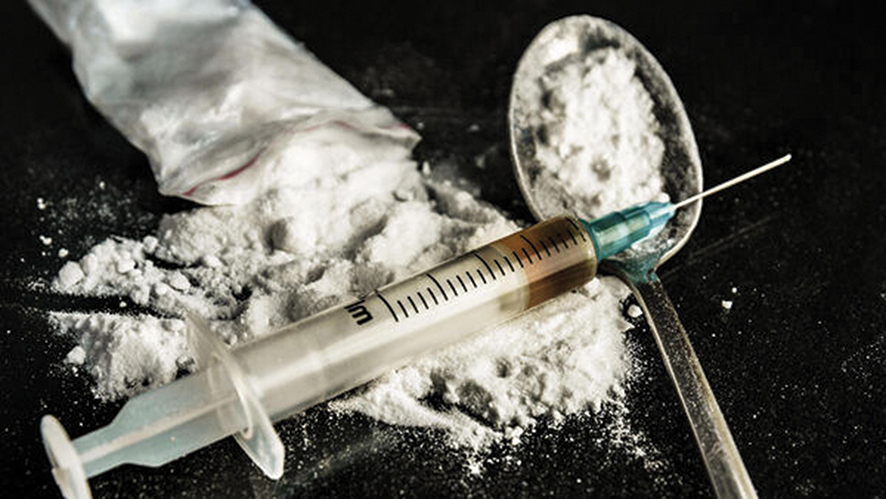What are the latest changes in the EU opioids market? How are global geopolitical developments impacting supply? Are heroin trafficking routes changing? To what extent do synthetic opioids pose a threat to Europe? These are among the issues explored in a new analysis — EU Drug Market: Heroin and other opioids — released at the end of January by the EU drugs agency (EMCDDA) and Europol.
The analysis describes the European market for heroin (the most frequently used illicit opioid), from production and trafficking, to distribution and use. It also details the processes, materials and criminal actors involved at different stages and levels of the market. Where available, data on heroin are supplemented by insights into other opioids trafficked and consumed in the EU.
The EU retail heroin market is estimated to be worth at least EUR 5.2 billion annually. The quantity of heroin seized by EU Member States more than doubled in 2021 to 9.5 tons — the highest amount in 20 years — with large individual consignments detected at seaports. Illicit opioid use remains a major concern in the EU, being responsible for around three-quarters of the over 6 000 drug-related overdose deaths in 2021. There are around 1 million high-risk opioid users in the EU.
The trafficking and distribution of heroin is the mainstay activity for some criminal networks operating in the EU, which rely on well-established infrastructure and contacts. As with other drug types, the abuse of legal business structures, money laundering and corruption are among the key enablers of the illicit heroin market.
Decline in Afghan opium poppy cultivation and production: potential implications for Europe
Almost all heroin consumed in Europe comes from Afghanistan, where the Taliban announced a ban on opium poppy cultivation and opium production in April 2022. Latest UNODC figures for 2023 show a 95% decline both in cultivation and in illicit opium production in the country. Cultivation in Afghanistan was estimated at 10,800 hectares in 2023 (233,000 hectares in 2022) and opium production at 333 tons (6,200 tons in 2022).

At present, there are no signs of heroin shortages in Europe. “Nonetheless, the Taliban’s ban on opium cultivation, if it is sustained, could have a significant impact on heroin availability in Europe in the future,” states the report. While it will take time for the developments in Afghanistan to be felt in the EU, a decrease in heroin availability could lead to market gaps being filled by potent synthetic opioids or stimulants (e.g. methamphetamine, cathinones), with significant negative effects on public health and security.
Traffickers adjust routes to minimize risks and exploit new opportunities
Four main routes are used for trafficking heroin from Afghanistan to Europe: Balkan, Southern, Caucasus and Northern. The analysis describes how traffickers are adjusting routes and methods to minimize risks and exploit new opportunities.
While the Balkan route remains a key corridor for heroin trafficking into the EU, seizures along it appear to be decreasing, due to perceived, or actual, stricter border controls along the overland section through Türkiye and Bulgaria. Heroin trafficking on the southern route to the EU, on the other hand, seems to be increasing. This can be seen in the large quantities of heroin departing from ports in Iran and Pakistan, as well as significant seizures at European ports. The use of the northern and Caucasus trafficking routes continues, however, the Russian war of aggression against Ukraine has likely contributed to changing trafficking patterns, with some criminal networks seeking alternative routes. The United Arab Emirates (UAE) has emerged as a significant transhipment point that is used to conceal the origin and nature of heroin shipments. It is also a key hub for money laundering and criminal coordination.
A complex and evolving opioid market
The European opioid market is increasingly complex, including diverted medicines and internationally controlled or new highly potent synthetic opioids. Methadone, buprenorphine, fentanyl and its derivatives and new synthetic opioids have become more visible in data on health consequences (e.g. drug-related deaths, hospital emergencies). Concerningly, over the past five years, most of the newly identified opioid substances reported to the EU Early Warning System on new psychoactive substances have been highly potent benzimidazole (nitazene) opioids, rather than fentanyl derivatives as in previous years.
Compared to North America, the EU has been impacted to a much lesser extent by synthetic opioids. This can be attributed to protective factors such as strict prescribing practices, social healthcare provisions in most countries, and well-developed treatment and harm reduction services for existing opioid users. Nevertheless, these substances play a prominent role in some EU Member States, particularly Nordic and Baltic countries, and the analysis calls for actions to increase preparedness across the EU.
Addressing current threats and boosting resilience
The findings of the report draw on data and information from the EMCDDA’s drug monitoring system and from Europol’s operational information on serious and organised crime. Taking a threat assessment approach, the agencies highlight key areas for action at EU and Member State level to respond to developments in the illegal heroin and other opioids market. These include improving the strategic intelligence picture, strengthening responses to reduce supply and enhance security, boosting international cooperation, investing in capacity-building, strengthening policy, public health and safety responses.
EMCDDA Director Alexis Goosdeel says: “Europe’s opioid problem is fast-evolving and increasing in complexity, shaped by global developments that may have far-reaching implications for our preparedness and response. It is imperative that we strengthen our capacity to rapidly detect and counter health and security threats emerging from a changing opioid market. At the same time, maintaining and developing further an integrated and evidence-based portfolio of health and social responses is more important than ever. For this purpose, we need to build on the results and the lessons learned from 30 years of European drug policy, based on the fundamental rights and the active participation of all stakeholders, including people who use drugs. As substance use and patterns of use change and become more complex, we must revise our model and adapt our prevention, treatment and harm reduction offer to respond to these new challenges.”

Europol’s Executive Director Catherine De Bolle states: “Although we are seeing a decline in opium poppy cultivation in Afghanistan, close monitoring of the supply chain and the diversification of the market is paramount, as criminal networks are known to be business-oriented, flexible and always on the lookout for new opportunities. Europol remains committed to fostering intelligence sharing, operational coordination and international cooperation with our partners in the fight against this concerning threat posed to the EU.”














